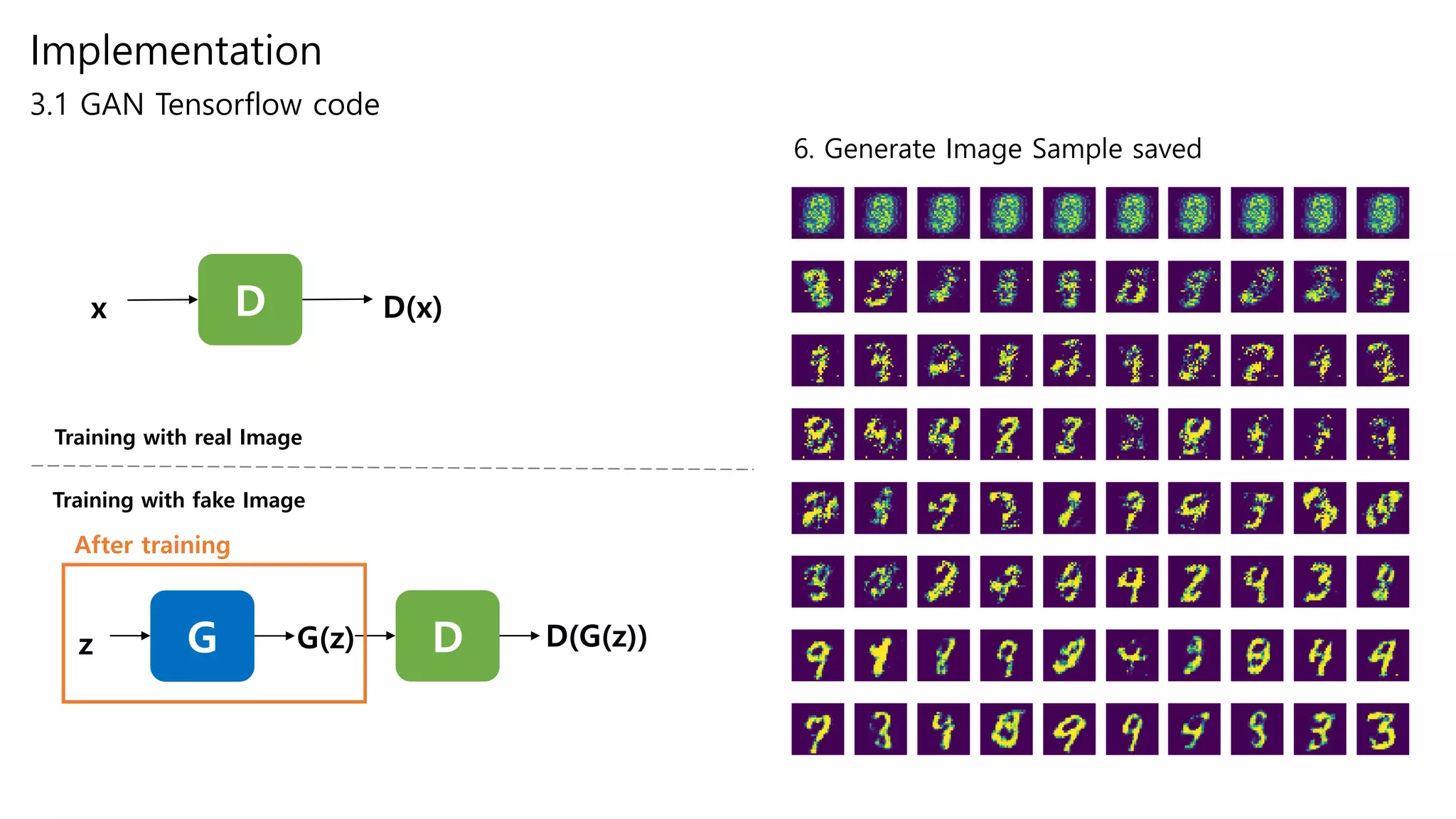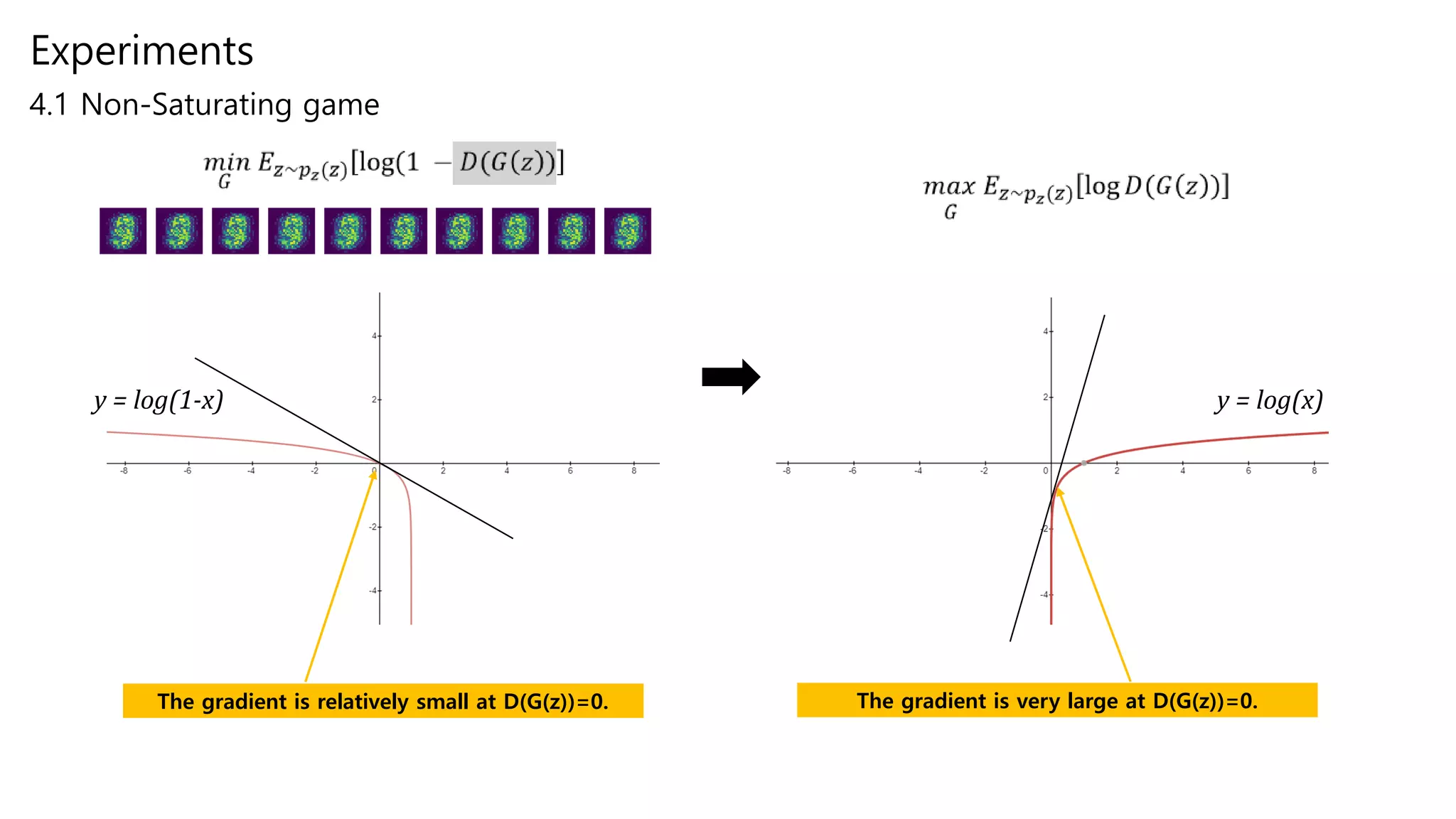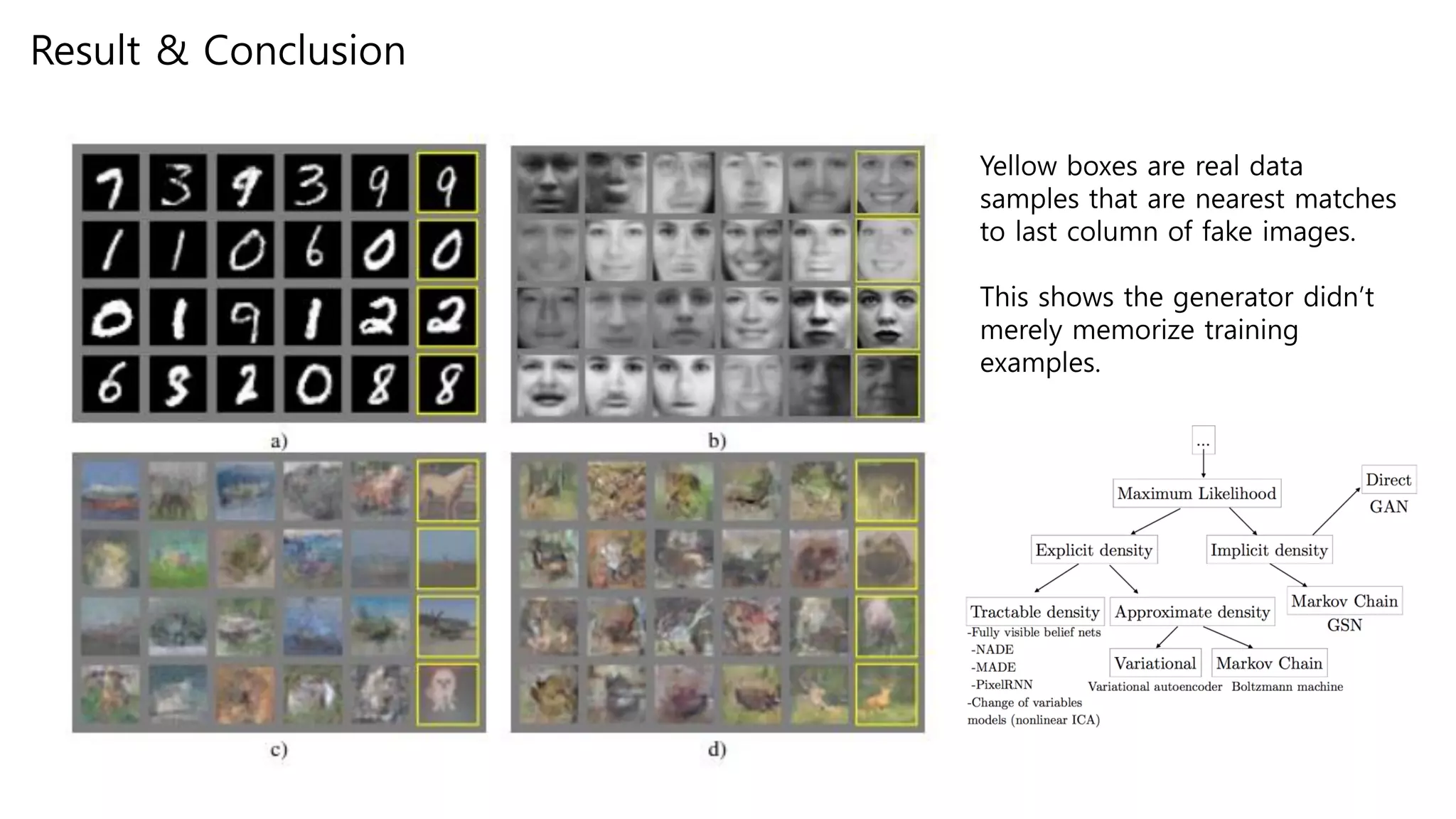Generative adversarial networks (GANs) are a class of unsupervised machine learning models used to generate new data with the same statistics as the training set. GANs work by having two neural networks, a generator and discriminator, compete against each other. The generator tries to generate fake images that look real, while the discriminator tries to tell real images apart from fake ones. This adversarial process allows the generator to produce highly realistic images. The paper proposes GANs and introduces their objective functions and training procedure to generate images similar to samples from the training data distribution.
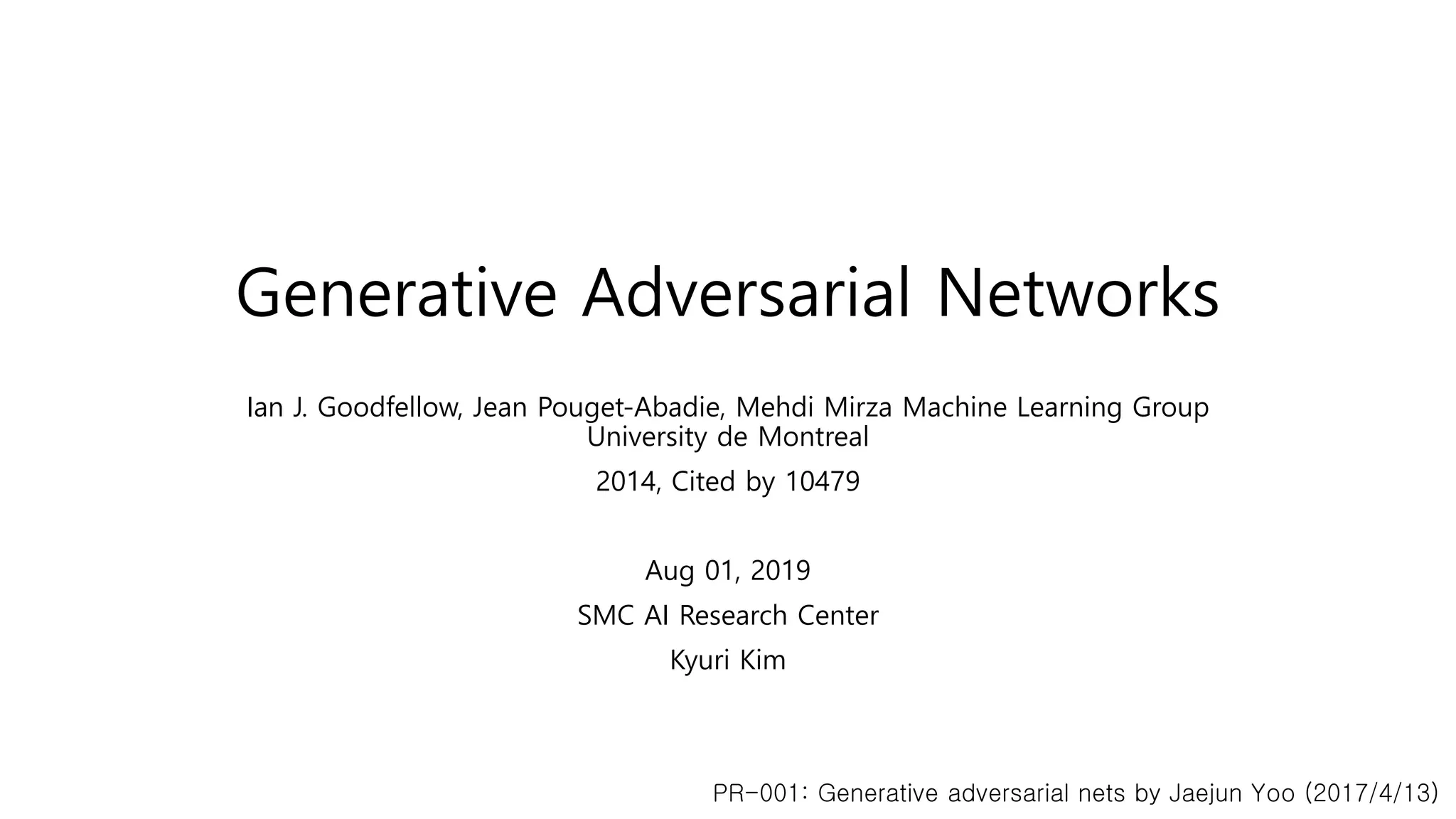
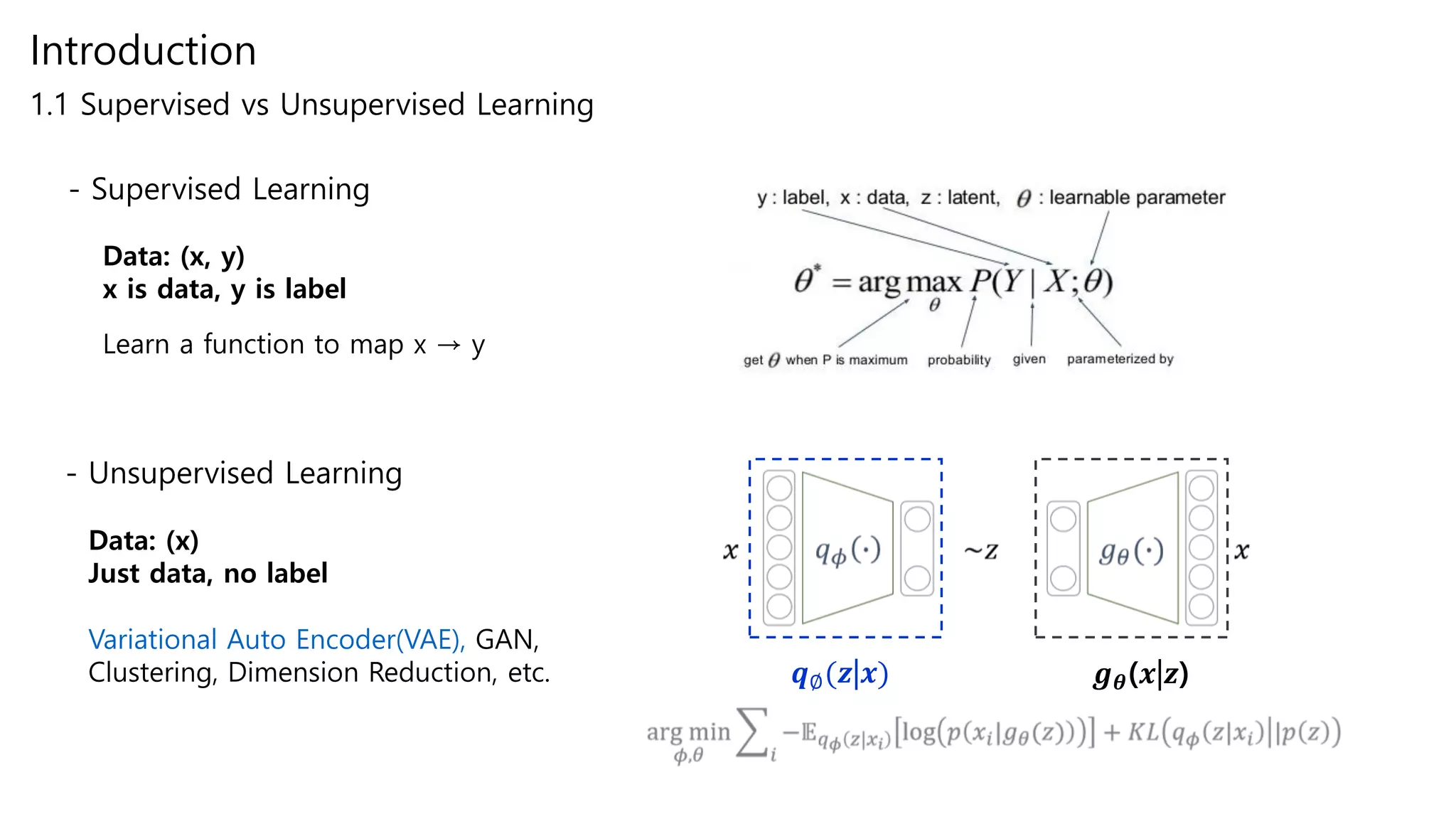
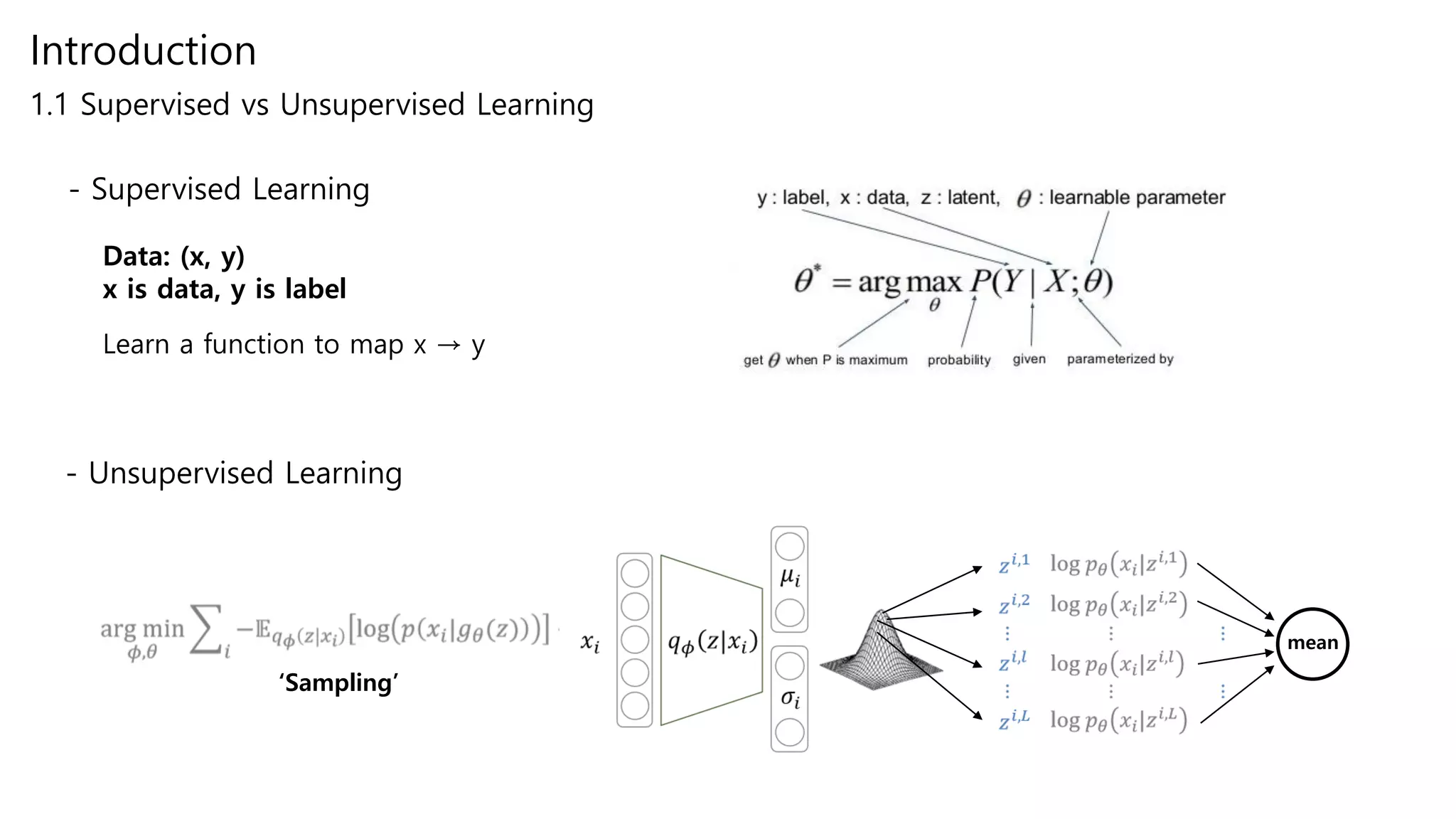

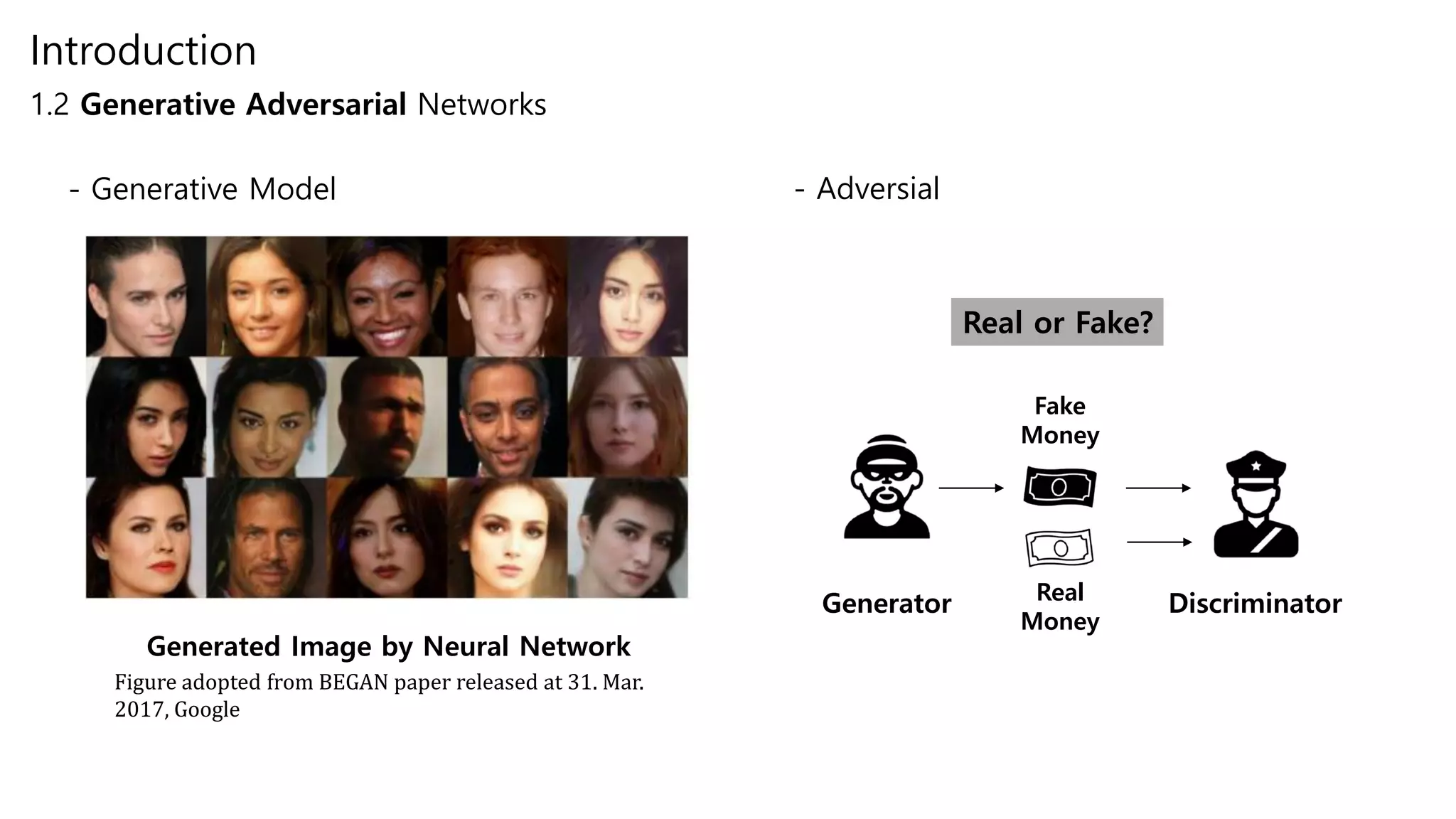
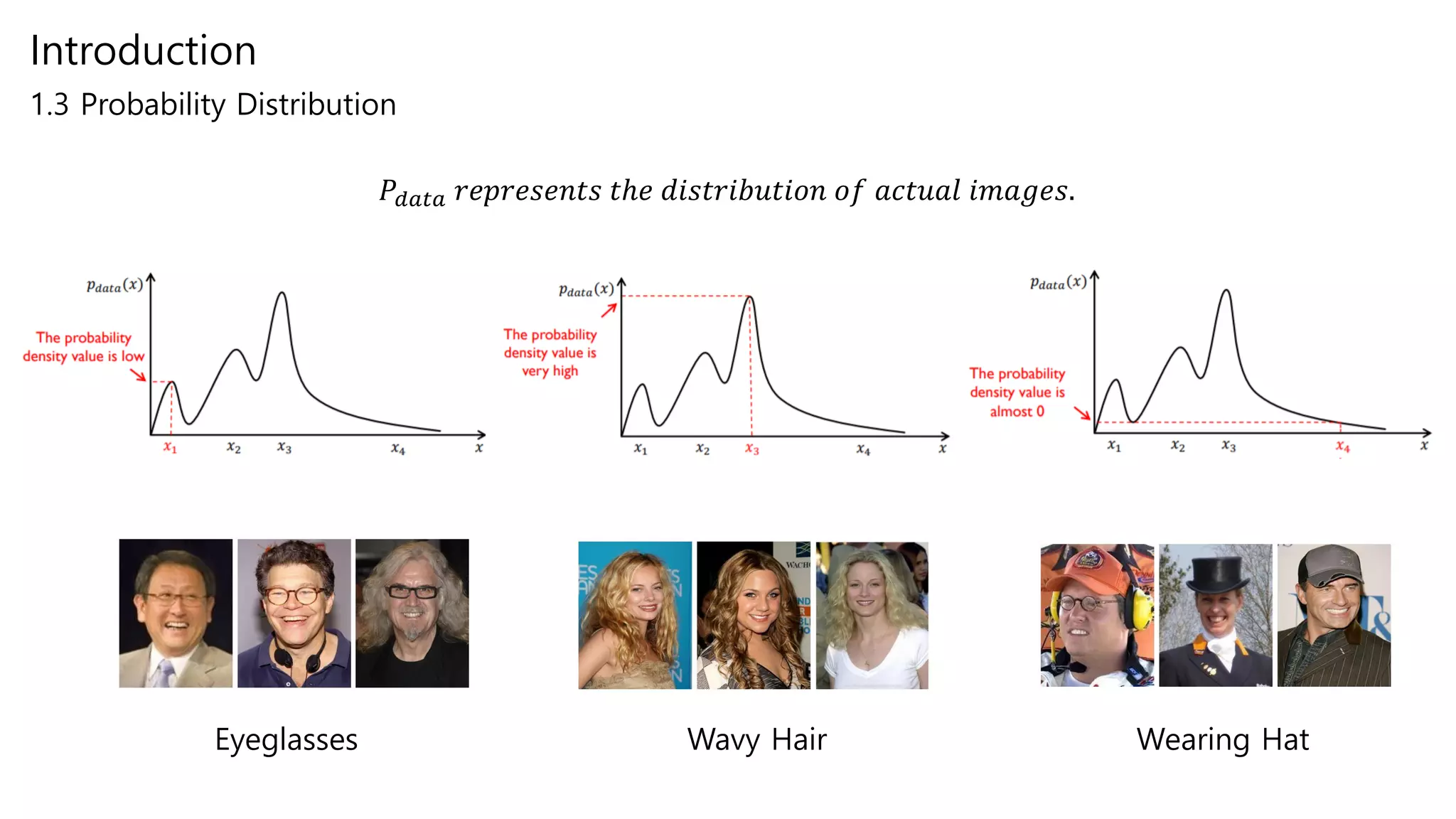
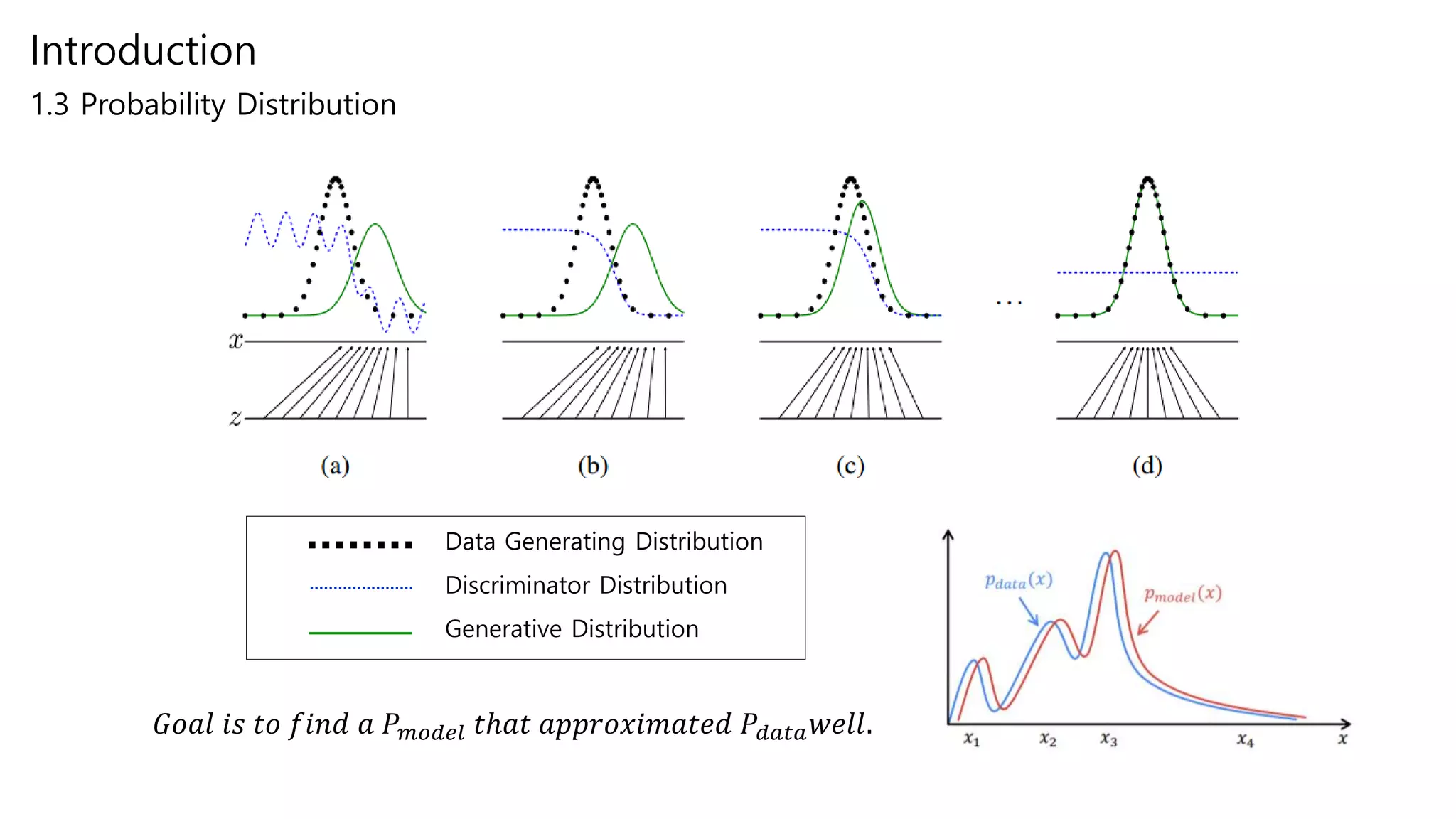

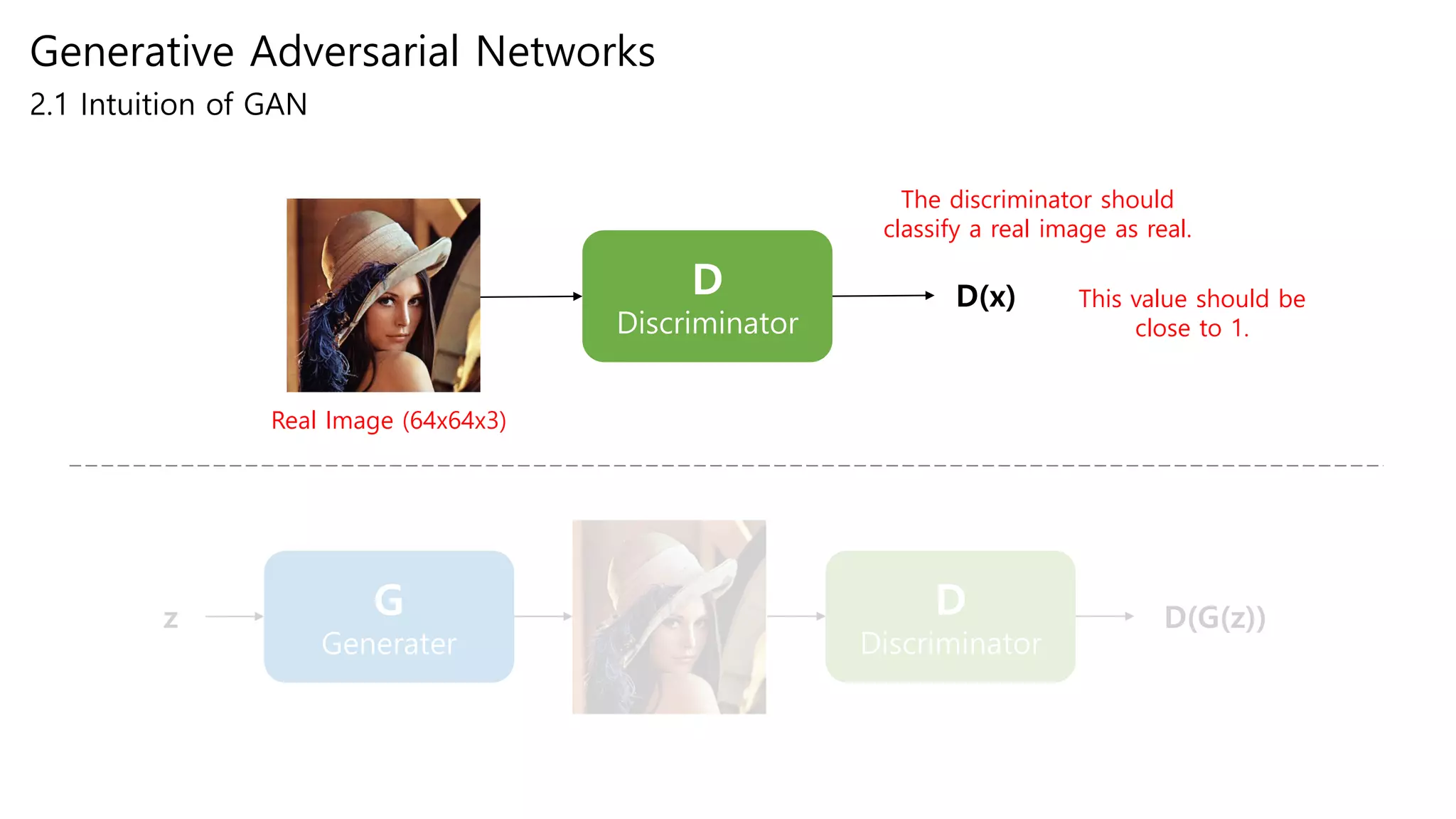
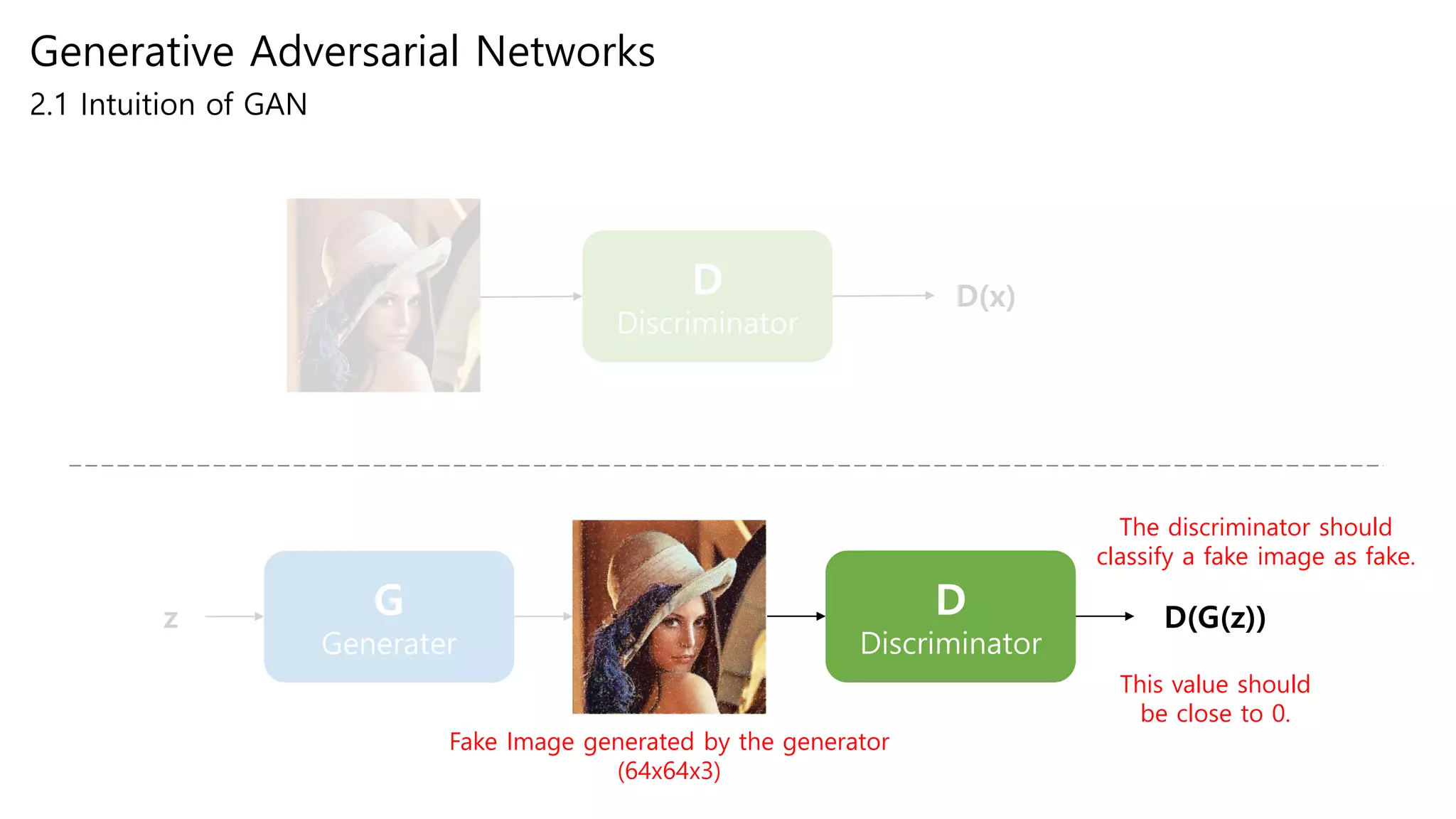
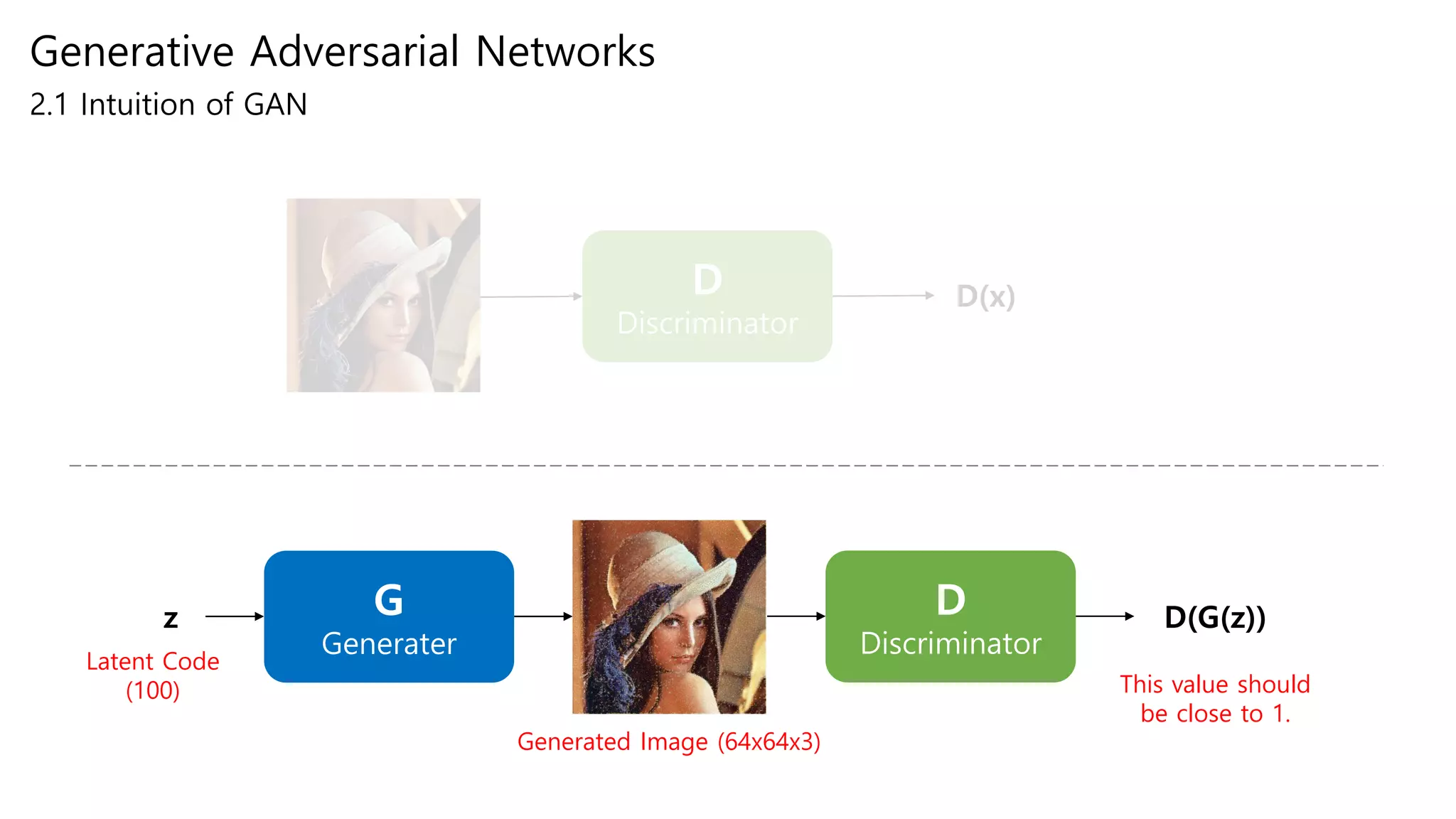
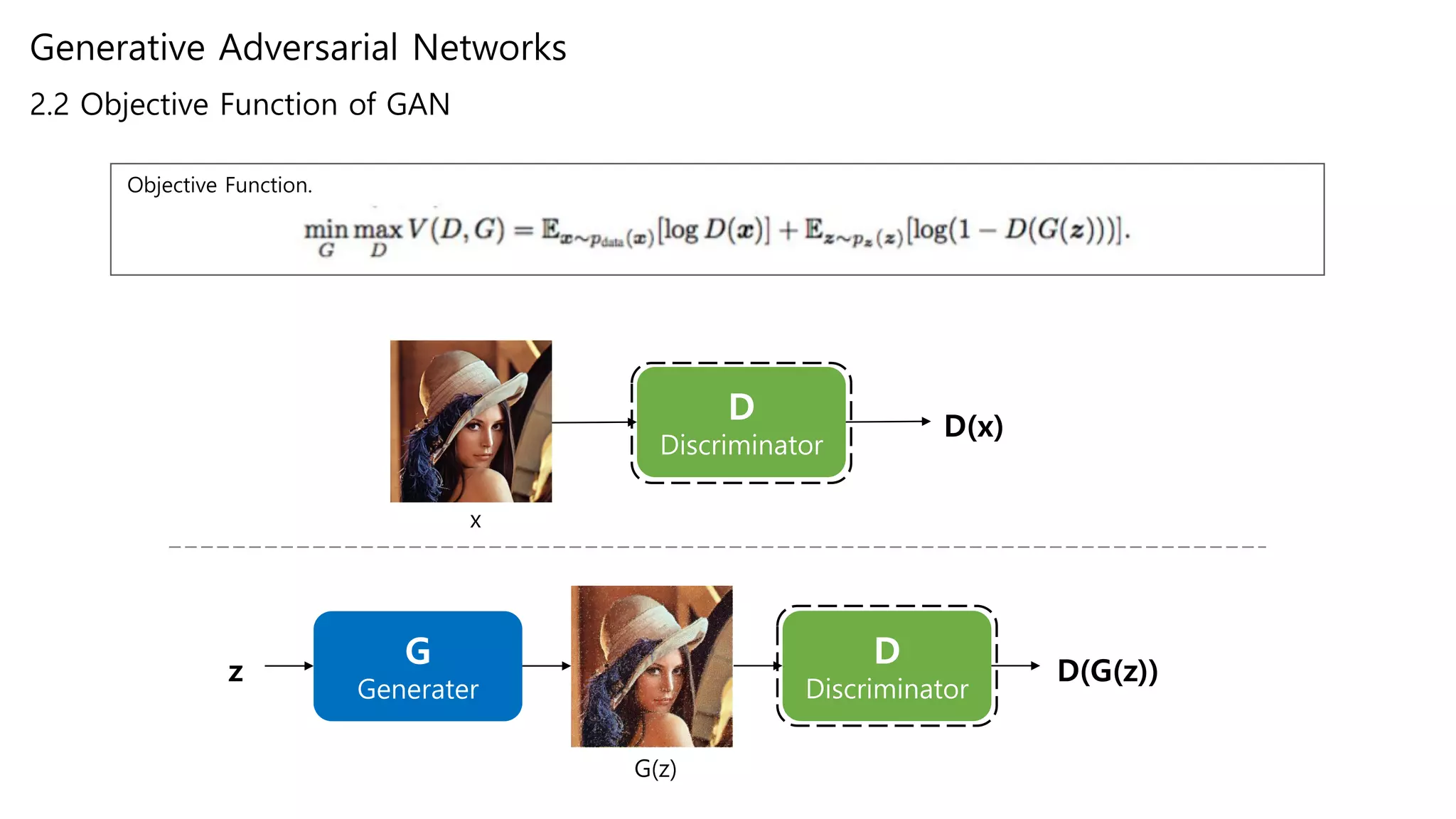
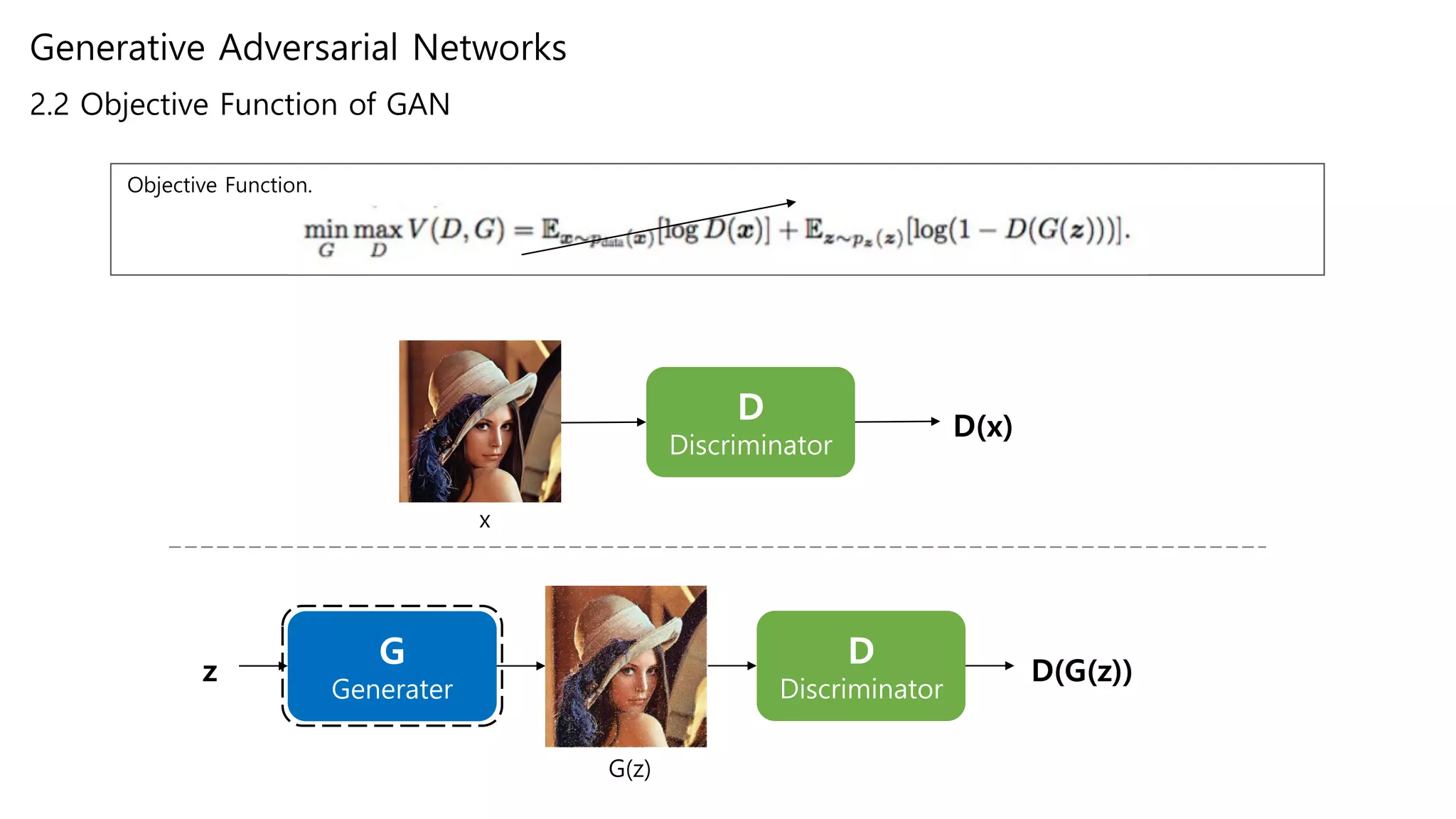
![Implementation
3.1 GAN Tensorflow code
mnist = input_data.read_data_sets("./mnist/data/",
one_hot=True)
total_epoch = 100
batch_size = 50
learning_rate = 0.0001
n_hidden = 256
n_input = 28 * 28
n_noise = 128
X = tf.placeholder(tf.float32, [None, n_input])
Z = tf.placeholder(tf.float32, [None, n_noise])
1. Requirements and Dataset
2. Generator Network
G_W1 = tf.Variable(tf.random_normal([n_noise, n_hidden],
stddev=0.01))
G_b1 = tf.Variable(tf.zeros([n_hidden]))
G_W2 = tf.Variable(tf.random_normal([n_hidden, n_input],
stddev=0.01))
G_b2 = tf.Variable(tf.zeros([n_input]))
def generator(noise_z):
hidden = tf.nn.relu(tf.matmul(noise_z, G_W1) + G_b1)
output = tf.nn.sigmoid(tf.matmul(hidden, G_W2) + G_b2)
return output
D D(x)x
G D D(G(z))z G(z)
Training with real Image
Training with fake Image
128
256
784
1
256784](https://image.slidesharecdn.com/journalreviewgenerativeadversarialnetworks-191229083749/75/Generative-adversarial-networks-14-2048.jpg)
![Implementation
3.1 GAN Tensorflow code
3. Discriminator Network
4. Generate Fake Image, Loss & Optimizer
D_W2 = tf.Variable(tf.random_normal([n_hidden, 1],
stddev=0.01))
D_b2 = tf.Variable(tf.zeros([1]))
def discriminator(inputs):
hidden = tf.nn.relu(tf.matmul(inputs, D_W1) + D_b1)
output = tf.nn.sigmoid(tf.matmul(hidden, D_W2) + D_b2)
return output
G = generator(Z)
D_gene = discriminator(G)
D_real = discriminator(X)
loss_D = tf.reduce_mean(tf.log(D_real) + tf.log(1 - D_gene))
loss_G = tf.reduce_mean(tf.log(D_gene))
train_D = tf.train.AdamOptimizer(learning_rate).minimize(-
loss_D, var_list=D_var_list)
train_G = tf.train.AdamOptimizer(learning_rate).minimize(-
loss_G, var_list=G_var_list)
Training with real Image
Training with fake Image
D D(x)x
G D D(G(z))z G(z)
CE(pred, y) = −y⋅log(pred)−(1−y)⋅log(1−pred)
Dloss = CE(D(x),1)+CE(D(G(z)),0) = −log(D(x))−log(1−D(g(z)) )
Gloss = CE(D(G(z)),1) = −log(D(G(z))](https://image.slidesharecdn.com/journalreviewgenerativeadversarialnetworks-191229083749/75/Generative-adversarial-networks-15-2048.jpg)
![Implementation
3.1 GAN Tensorflow code
5. Training & Testing
sess = tf.Session()
sess.run(tf.global_variables_initializer())
total_batch = int(mnist.train.num_examples/batch_size)
loss_val_D, loss_val_G = 0, 0
for epoch in range(total_epoch):
for i in range(total_batch):
batch_xs, batch_ys =
mnist.train.next_batch(batch_size)
noise = get_noise(batch_size, n_noise)
# 판별기와 생성기 신경망을 각각 학습
_, loss_val_D = sess.run([train_D, loss_D],
feed_dict={X: batch_xs,
Z: noise})
_, loss_val_G = sess.run([train_G, loss_G],
feed_dict={Z: noise})
print('Epoch:', '%04d' % epoch,
'D loss: {:.4}'.format(loss_val_D),
'G loss: {:.4}'.format(loss_val_G))
Training with real Image
Training with fake Image
D D(x)x
G D D(G(z))z G(z)
noise = get_noise(sample_size, n_noise)
samples = sess.run(G, feed_dict={Z: noise})
Get Closer to 1.
Get Closer to 0.](https://image.slidesharecdn.com/journalreviewgenerativeadversarialnetworks-191229083749/75/Generative-adversarial-networks-16-2048.jpg)
![Implementation
3.1 GAN Tensorflow code
5. Training & Testing
sess = tf.Session()
sess.run(tf.global_variables_initializer())
total_batch = int(mnist.train.num_examples/batch_size)
loss_val_D, loss_val_G = 0, 0
for epoch in range(total_epoch):
for i in range(total_batch):
batch_xs, batch_ys =
mnist.train.next_batch(batch_size)
noise = get_noise(batch_size, n_noise)
# 판별기와 생성기 신경망을 각각 학습
_, loss_val_D = sess.run([train_D, loss_D],
feed_dict={X: batch_xs,
Z: noise})
_, loss_val_G = sess.run([train_G, loss_G],
feed_dict={Z: noise})
print('Epoch:', '%04d' % epoch,
'D loss: {:.4}'.format(loss_val_D),
'G loss: {:.4}'.format(loss_val_G))
Training with real Image
Training with fake Image
D D(x)x
G D D(G(z))z G(z)
noise = get_noise(sample_size, n_noise)
samples = sess.run(G, feed_dict={Z: noise})
Get Closer to 1.](https://image.slidesharecdn.com/journalreviewgenerativeadversarialnetworks-191229083749/75/Generative-adversarial-networks-17-2048.jpg)
